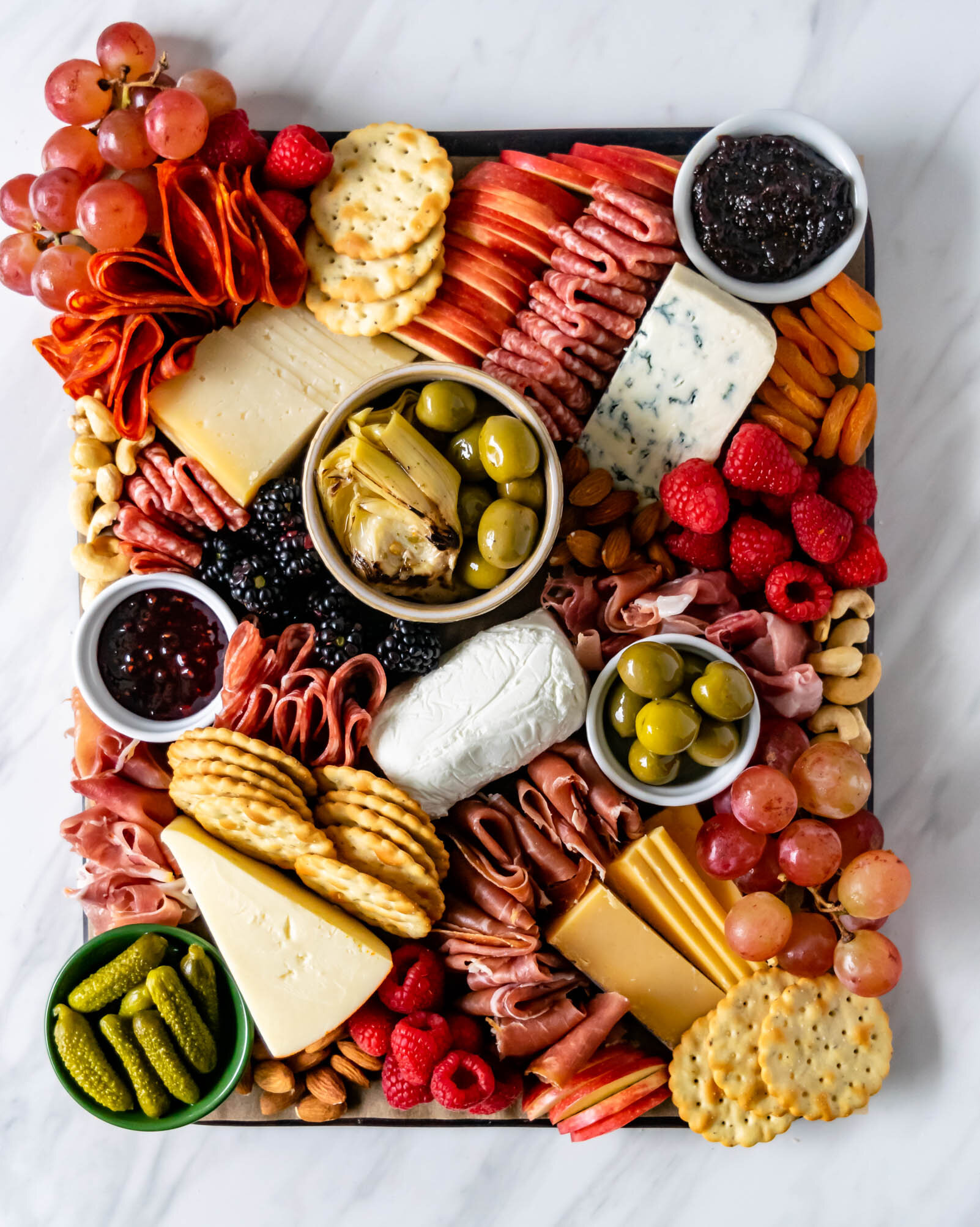Fall Mediterranean Snacking Board
/Let’s talk about one of my favorite food groups- breads with dips, a.k.a. snacking boards. There is nothing better than a good carb used as a vessel for scooping some salty, yogurty dip and that is a statement that I will always stand behind. Snacking boards have been a hot topic for the last few years because they can be ultra-pretty and can make you feel a bit like Martha Stewart when you make one. For me, they are the color by numbers of the food world and I’m personally very into that.
The inspiration for this particular board came after a long wait to early vote. About 2 weeks ago, when early voting opened in Florida, Martin and I headed to the library one afternoon to stand in line and vote. I finished a few minutes before Martin so I meandered over to the cookbook section, just to make sure I didn’t miss anything new or interesting and I’m so glad that I did. There, gleaming at me from those metal library shelves, was a copy of Falastin by Sami Tamimi, a book I’ve been eager to get my hands on since it’s release in this past spring. Sami Tamimi is a fairly well-known chef, largely in part because of his work with my very favorite guy, Yotam Ottolenghi. Falastin, which shares food and stories from his childhood in Palestine, is Tamimi’s first book without Ottolenghi and it is an absolute joy. In the five minute car ride home, Martin and I tagged at least ten recipes we couldn’t wait to try, the first being butternut squash m’tabbal, a butternut squash and eggplant dip that made it’s appearance on this board (and then on breakfast sandwiches, quesadillas, and scrambled eggs everyday after). I built a Mediterranean-esque board centered around that particular recipe, heavy on the dips and pitas with a few cheeses, some fruit and a little salty meat for good measure. I’ll break down this board for you and I also have a slightly more traditional charcuterie and cheese how-to post here, if you are interested, but the beauty of a good snack board is making it your own. Take some notes and then trust your self and give it a whirl!
butternut squash and eggplant dip from “falastin” by
olive tapenade
a fall mediterranean snacking board
dips: The most important part of this board, you want a varied assortment. I used ______ as my centerpiece, and added to it a very traditional hummus drizzling with olive oil and sprinkled with za’atar and a salty olive tapenade (recipe below). A bright, herby yogurt dip or a smoky muhamarra would also go really well here.
breads: Pita, pita, pita! I skipped the crackers for this board and went straight for bread. Naan, focaccia, and even baguette slices would be great vessels for scooping all of those dips.
cheese: Since the focus of this board wasn’t exactly on the cheese, I only chose two: a sheep’s milk Israeli feta, which was really great sprinkled on top of dip-laden pita wedges, and a goat milk gouda.
meat: I almost skipped the meat entirely, and you definitely could and go full vegetarian, but I love a good salty meat and I couldn’t help myself. I just added a few slices of prosciutto, which ended up pairing excellently with the goat gouda and apple slices.
fruit: I used a combination of fresh and dried fruit here. Grapes, blackberries, apples, and dates for snacking and pomegranate wedges and dried persimmons for aesthetic appeal.
salty snacks: This category encompasses things likes olives and pickles and nuts. I already had an olive tapenade on the board so I didn’t add any extra snacking olives. Instead, I sliced a few Persian cucumbers and tossed them with salt, dill, red pepper, a pinch of sugar, and apple cider vinegar and created my own crunchy quick pickle. (I essentially followed this recipe from Bon Appetit, with just a few creative liberties.) I also added some pistachios for creaminess and crunch.
Olive Tapenade
makes about 1 1/2 cups
a few years ago, my aunt took me to the South of France for ten days to celebrate our birthdays. we ate confit duck legs at 11 am with sauternes, we strolled through cobblestone streets snacking on croissants, and we spent afternoons on the rooftop terrace of our AirBnB eating cheese. it was magical. we also spent an afternoon in a culinary class with my friend Gilles where we made grand aioli and olive tapenade and ate in the middle of his garden. this is a little riff on Gilles’ olive tapenade and it’s the easiest and most delicious recipe I’ve made.
Ingredients
200 g green and black olive, pitted
20 grams pistachios
a handful of fresh basil
2 tsp capers
50 grams olive oil
50 grams oil-packed tuna
Procedure
Combine everything except the olive oil in the bowl of a food processor and pulse until everything is broken down into small, coarse pieces.
Drizzle in olive oil and pulse a few more times until everything is combined. Taste and add salt and pepper if needed.
Serve drizzled with more olive oil and lots of pita.














